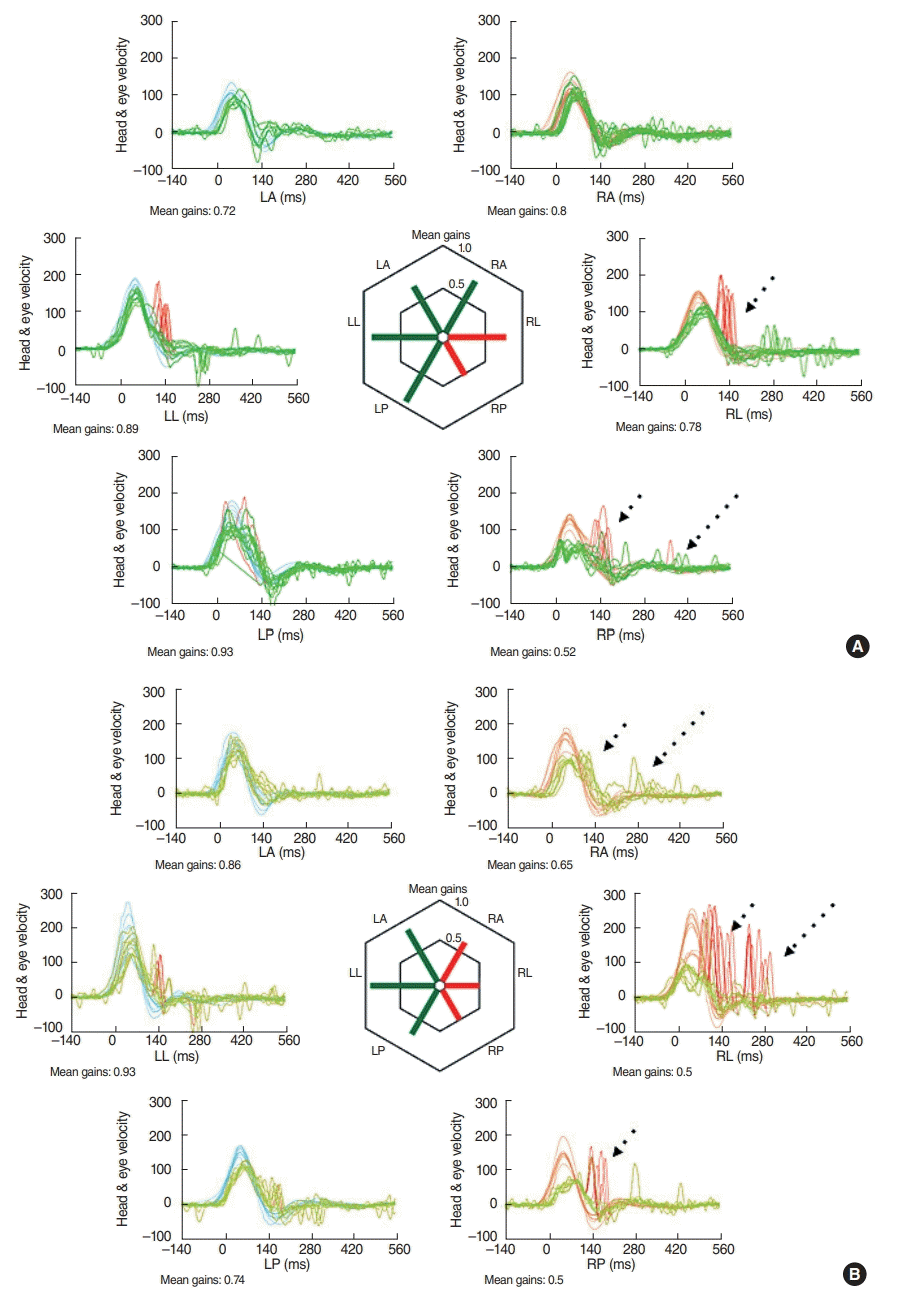1. Pullens B, van Benthem PP. Intratympanic gentamicin for Meniere’s disease or syndrome. Cochrane Database Syst Rev. 2011; Mar. (3):CD008234.
2. Sajjadi H, Paparella MM. Meniere’s disease. Lancet. 2008; Aug. 372(9636):406–14.

3. Rah YC, Han JJ, Park J, Choi BY, Koo JW. Management of intractable Meniere’s disease after intratympanic injection of gentamicin. Laryngoscope. 2015; Apr. 125(4):972–8.
4. Ghossaini SN, Wazen JJ. An update on the surgical treatment of Meniere’s diseases. J Am Acad Audiol. 2006; Jan. 17(1):38–44.
5. Buki B, Junger H. Intratympanal gentamicin in Meniere’s disease: effects on individual semicircular canals. Auris Nasus Larynx. 2018; Feb. 45(1):39–44.

6. Tjernstrom F, Fransson PA, Kahlon B, Karlberg M, Lindberg S, Siesjo P, et al. Hearing and vestibular function after preoperative intratympanic gentamicin therapy for vestibular schwanomma as part of vestibular prehab. Ear Hear. 2016; Nov/Dec. 37(6):744–50.
7. Marques PS, Dias CC, Perez-Fernandez N, Spratley J. Instrumental head impulse test changes after intratympanic gentamicin for unilateral definite Meniere’s disease: a systematic review and meta-analysis. Auris Nasus Larynx. 2018; Oct. 45(5):943–51.
8. Ahmed RM, Hannigan IP, MacDougall HG, Chan RC, Halmagyi GM. Gentamicin ototoxicity: a 23-year selected case series of 103 patients. Med J Aust. 2012; Jun. 196(11):701–4.

9. Weber KP, Aw ST, Todd MJ, McGarvie LA, Curthoys IS, Halmagyi GM. Horizontal head impulse test detects gentamicin vestibulotoxicity. Neurology. 2009; Apr. 72(16):1417–24.

10. MacDougall HG, Weber KP, McGarvie LA, Halmagyi GM, Curthoys IS. The video head impulse test: diagnostic accuracy in peripheral vestibulopathy. Neurology. 2009; Oct. 73(14):1134–41.

11. Fetter M, Zee DS. Recovery from unilateral labyrinthectomy in rhesus monkey. J Neurophysiol. 1988; Feb. 59(2):370–93.

12. Mantokoudis G, Schubert MC, Tehrani AS, Wong AL, Agrawal Y. Early adaptation and compensation of clinical vestibular responses after unilateral vestibular deafferentation surgery. Otol Neurotol. 2014; Jan. 35(1):148–54.

13. Tian JR, Ishiyama A, Demer JL. Temporal dynamics of semicircular canal and otolith function following acute unilateral vestibular deafferentation in humans. Exp Brain Res. 2007; Apr. 178(4):529–41.

14. McCabe BF, Ryu JH, Sekitani T. Further experiments on vestibular compensation. Laryngoscope. 1972; Mar. 82(3):381–96.

15. Blodow A, Pannasch S, Walther LE. Detection of isolated covert saccades with the video head impulse test in peripheral vestibular disorders. Auris Nasus Larynx. 2013; Aug. 40(4):348–51.

16. Roehm P, Hoffer M, Balaban CD. Gentamicin uptake in the chinchilla inner ear. Hear Res. 2007; Aug. 230(1-2):43–52.

17. Marques P, Manrique-Huarte R, Perez-Fernandez N. Single intratympanic gentamicin injection in Meniere’s disease: VOR change and prognostic usefulness. Laryngoscope. 2015; Aug. 125(8):1915–20.
18. Stevens MN, Garrison DB, Kaylie DM. What is the potential clinical utility of vHIT when assessing adult patients with dizziness. Laryngoscope. 2017; Dec. 127(12):2689–90.

19. Batuecas-Caletrio A, Santa Cruz-Ruiz S, Munoz-Herrera A, PerezFernandez N. The map of dizziness in vestibular schwannoma. Laryngoscope. 2015; Dec. 125(12):2784–9.






 PDF
PDF Citation
Citation Print
Print



 XML Download
XML Download